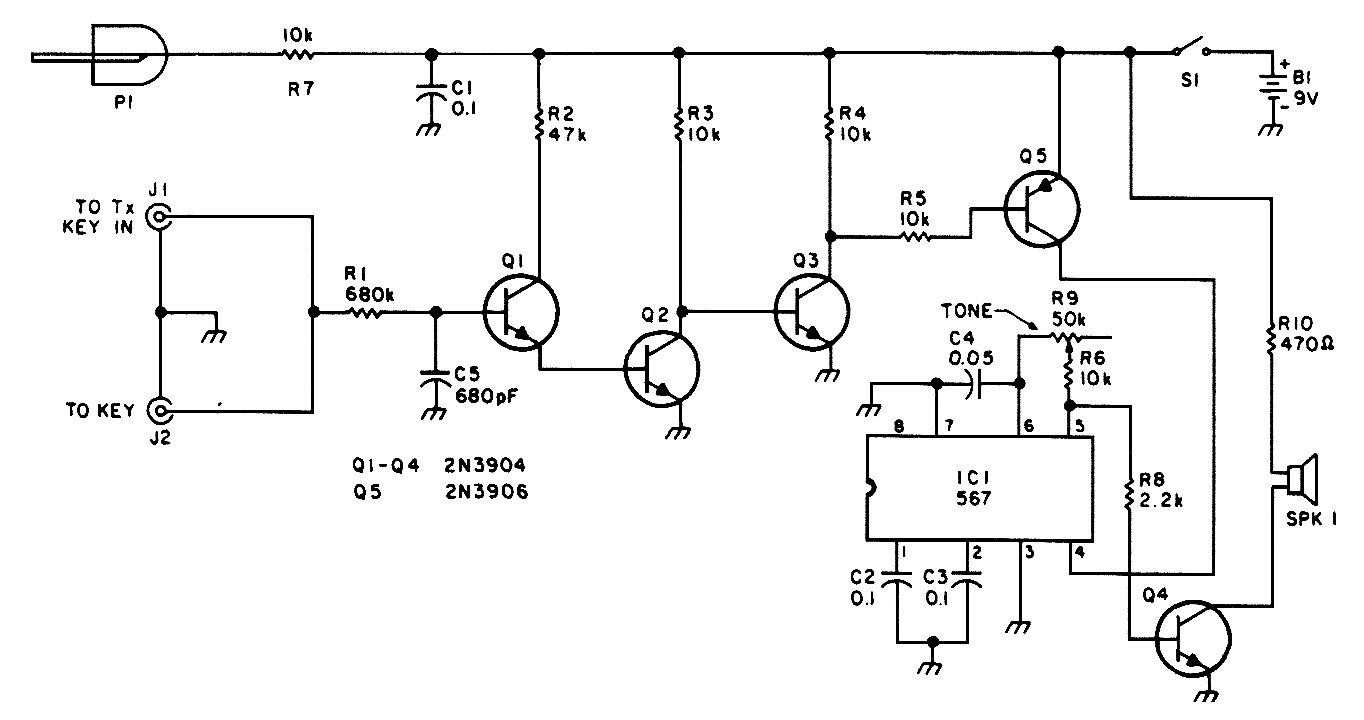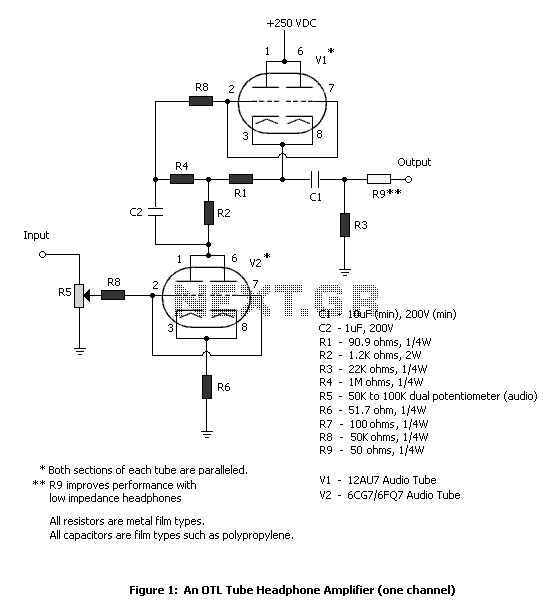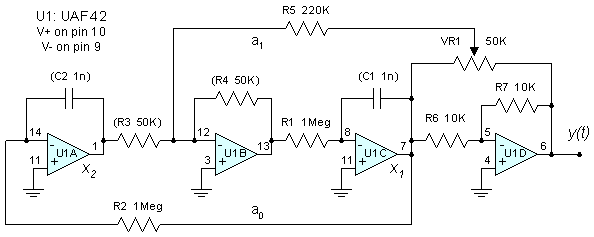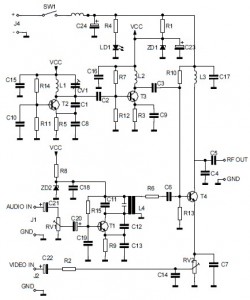
Phase-Shift Oscillator For Audio Range

This phase-shift oscillator is suitable for audio oscillator applications. Adjust R7 to achieve a good sine wave. An amplifier gain of 29 is necessary for oscillation. If C=C1=C2=C3 and R=R1=R2=R3: Typically, R will range from 1 to 100 kOhm and C will be from 0.1 µF down to 100 pF in most practical circuits. As an initial setup, select R=10 kOhm and C=0.0068 µF for the ~1-kHz range.
This phase-shift oscillator employs a configuration that generates a sine wave output, making it particularly effective for audio frequency applications. The oscillator's fundamental operation relies on a combination of resistors and capacitors arranged in a feedback loop, which creates the necessary phase shift for sustained oscillation.
In this design, the phase shift is achieved through three identical RC networks, each contributing a 60-degree phase shift, resulting in a total of 180 degrees. The additional 180 degrees required for oscillation is provided by an inverting amplifier, which must have a gain of 29 to ensure that the loop gain is unity at the oscillation frequency.
The resistor R7 plays a critical role in fine-tuning the amplitude of the output sine wave. By adjusting R7, the feedback level can be optimized to prevent distortion while maintaining a stable oscillation. The choice of resistors (R1, R2, R3) and capacitors (C1, C2, C3) is crucial for setting the desired frequency of oscillation. In typical applications, the resistors are selected within a range of 1 kOhm to 100 kOhm, while the capacitors are chosen from 0.1 µF down to 100 pF.
For initial experimentation, setting R to 10 kOhm and C to 0.0068 µF is recommended, which targets an oscillation frequency around 1 kHz. This configuration allows for a balance between stability and performance, making it suitable for various audio applications.
Overall, the phase-shift oscillator is a versatile circuit that can be adapted for different frequency ranges by varying the resistor and capacitor values, providing a practical solution for generating audio signals in electronic applications. This phase-shift oscillator is useful for audio oscillator applications. Adjust R7 for a good sine w ave. An amplifier gain of 29 is required for oscillation. If C=C1 = C2 = C3 and R = Ri = R2 = R3: Typically, R will be 1 to 100 KOhmhm and C will be 0.1 down to 100 pF, in most practical circuits. As a start, choose R = 10 KOhm and C=0.006 8 (for ~ 1-kHz range).
This phase-shift oscillator employs a configuration that generates a sine wave output, making it particularly effective for audio frequency applications. The oscillator's fundamental operation relies on a combination of resistors and capacitors arranged in a feedback loop, which creates the necessary phase shift for sustained oscillation.
In this design, the phase shift is achieved through three identical RC networks, each contributing a 60-degree phase shift, resulting in a total of 180 degrees. The additional 180 degrees required for oscillation is provided by an inverting amplifier, which must have a gain of 29 to ensure that the loop gain is unity at the oscillation frequency.
The resistor R7 plays a critical role in fine-tuning the amplitude of the output sine wave. By adjusting R7, the feedback level can be optimized to prevent distortion while maintaining a stable oscillation. The choice of resistors (R1, R2, R3) and capacitors (C1, C2, C3) is crucial for setting the desired frequency of oscillation. In typical applications, the resistors are selected within a range of 1 kOhm to 100 kOhm, while the capacitors are chosen from 0.1 µF down to 100 pF.
For initial experimentation, setting R to 10 kOhm and C to 0.0068 µF is recommended, which targets an oscillation frequency around 1 kHz. This configuration allows for a balance between stability and performance, making it suitable for various audio applications.
Overall, the phase-shift oscillator is a versatile circuit that can be adapted for different frequency ranges by varying the resistor and capacitor values, providing a practical solution for generating audio signals in electronic applications. This phase-shift oscillator is useful for audio oscillator applications. Adjust R7 for a good sine w ave. An amplifier gain of 29 is required for oscillation. If C=C1 = C2 = C3 and R = Ri = R2 = R3: Typically, R will be 1 to 100 KOhmhm and C will be 0.1 down to 100 pF, in most practical circuits. As a start, choose R = 10 KOhm and C=0.006 8 (for ~ 1-kHz range).





